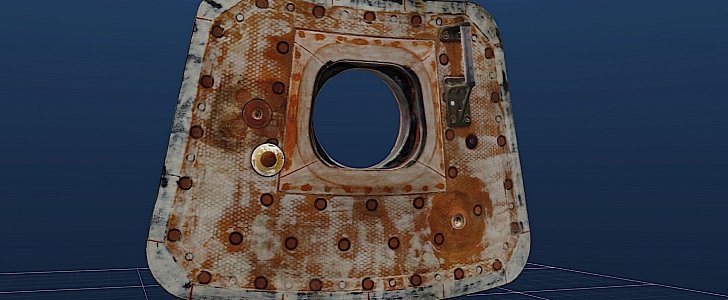On July 20, we’ll be celebrating half a century since two of our representatives, Neil Armstrong and Buzz Aldrin, became the first humans to set foot on another world. In honor of the moment, a wealth of events are planned across the U.S., including live re-builds of the ship that carried them to the Moon.
On July 18, the National Air and Space Museum at the Smithsonian, MythBuster Adam Savage and the crew at Tested.com will be attempting something never tried before: the build of an Apollo 11 command module‘s hatch in a live performance.
According to Tested, the parts needed for the build are already being made by “ 44 artists and fabrication shops” across the U.S. using 3D scans of the module and “original engineering drawings from the Smithsonian archives.”
Savage promises an “artistic representation of the hatch and a departure from my typical realistic replicas.” That essentially means a lot of new colors and finishes to make the hatch look more alive than ever before.
Most importantly, all the data used to create this hatch is available for download for free. That means that if you are in possession of a 3D printer, you can use this data to build your own version.
So, why is this part of the command module so important for Savage and the Smithsonian?
Because it is this piece of hardware that became the door through which Armstrong stepped out onto the surface of the Moon. It took him the better part of ten minutes to get out and set foot on the ground, but he did it anyway.
In some respects, it was the hatch’s position on the module that determined the name of the first man to set foot on our satellite. Because of Columbia's configuration and the two astronaut’s positions inside, it was only Armstrong who could get out safely.
In a test conducted prior to launch, Aldrin attempted to exit the module first, but damaged the simulator because of the little room available.
The live build of the hatch will take place on July 18 at the National Air and Space Museum
According to Tested, the parts needed for the build are already being made by “ 44 artists and fabrication shops” across the U.S. using 3D scans of the module and “original engineering drawings from the Smithsonian archives.”
Savage promises an “artistic representation of the hatch and a departure from my typical realistic replicas.” That essentially means a lot of new colors and finishes to make the hatch look more alive than ever before.
Most importantly, all the data used to create this hatch is available for download for free. That means that if you are in possession of a 3D printer, you can use this data to build your own version.
So, why is this part of the command module so important for Savage and the Smithsonian?
Because it is this piece of hardware that became the door through which Armstrong stepped out onto the surface of the Moon. It took him the better part of ten minutes to get out and set foot on the ground, but he did it anyway.
In some respects, it was the hatch’s position on the module that determined the name of the first man to set foot on our satellite. Because of Columbia's configuration and the two astronaut’s positions inside, it was only Armstrong who could get out safely.
In a test conducted prior to launch, Aldrin attempted to exit the module first, but damaged the simulator because of the little room available.
The live build of the hatch will take place on July 18 at the National Air and Space Museum

